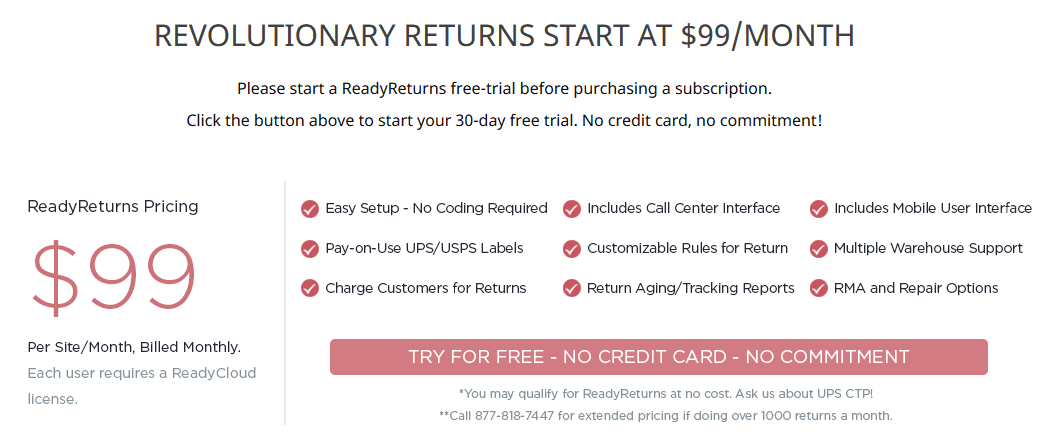RETURNS MANAGEMENT SYSTEM
Returns management systems are becoming increasingly necessary in the online e-commerce stratosphere. Customers want more options from the online stores that they do business with, and online stores need to compete better with local stores or they won’t be in business for very long, indeed.
Think about it…. you can easily make a purchase at a local store like Target, and you won’t have to worry if you need to make a return. All you do is go back to the store and return the item for either a replacement, a refund or an in-store credit. This same mantra is what the consumer thinks about when they consider buying things from your online store: how easy or costly will returns be?
STUDIES SHOW CUSTOMERS WANT EASY RETURNS
A number of studies about how returns management systems can increase sales have been conducted in recent years, and the results have been rather astounding. A Forester Research study on returns management found that your most loyal shoppers, the repeat buyers, will actually make more returns than any other shopper. Catering to these buyers is incremental in your store achieving long term and sustained growth and retention.
- The study also found that customers want low or no return shipping fees, little or no restocking fees and a no-questions-asked returns policy.
- 81% of online customers are more loyal to brands that offer easy returns.
- In 65% of all cases, returns being made are at the fault of the store and not the consumer, including a damaged item, a wrong item being shipped or a grossly misrepresented item being sent.
HOW TO IMPROVE YOUR RETURNS PROCESS
There are a number of ways that you can improve your returns process. The first place you should start is with assessing how your returns process works. For example, if you are paying too high a shipping rate for the returns, you may be able to explore options with ReadyShipper X, which entitles you to receive Commercial Plus pricing on Priority Mail shipments up to 20 pounds.
Using this service can make your returns more affordable with the return cost of shipping (for items up to 20 pounds). You should also examine what your policy mandates… and compare that to what other big stores are offering.
- Consider offering a 30-day returns policy with low or no fees associated, including no restocking fees.
- Look into discount shipping options to reduce your cost of returns.
- Understand that customers who make returns also make more purchases. Even if you eat money on a return, consider that advertising on the future purchase and retention of that customer, and not as a loss to your profits.
- Look to expedite the returns by offering an integrated returns management system on your website that allows customers to initiate returns on their own.
- Explore options with rejecting low value returns and issuing a refund instead, so you don’t have to pay return shipping on items that wouldn’t make sense to send back.
- Assess your customer service policy and assure that your business is competitive with other online stores that offer the same products.


